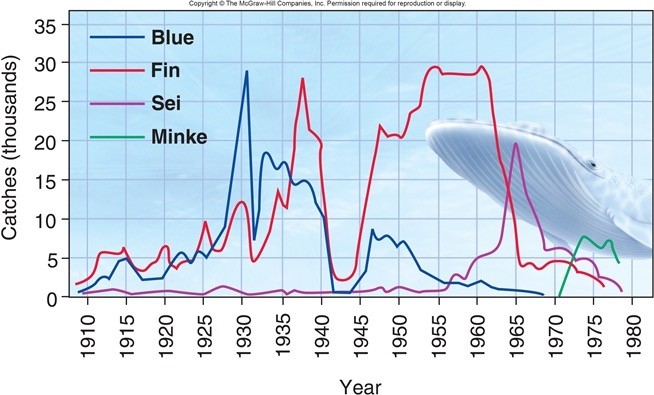In females, a primary oocyte completes meiosis II at the time of fertilization
____________________ Indicate whether the statement is true or false.
F, secondary
You might also like to view...
There are _____ microbial cells living on and in our bodies compared to the number of our body cells
a. ten times more b. ten times less c. about the same number of d. about half as many e. 100 times more
A bacteriophage is ________
A) a small cloning vector used in humans B) a large cloning vector used in humans C) a type of bacterial protein D) a virus that specifically infects bother viruses E) a virus that specifically infects bacteria
 Fishing by humans has severely affected populations of many different marine species, including whales. Examine the figure above, making sure to note what each axis represents. What can best explain the pattern for minke whales?
Fishing by humans has severely affected populations of many different marine species, including whales. Examine the figure above, making sure to note what each axis represents. What can best explain the pattern for minke whales?
A. Minke whales were too difficult to catch until they become malnourished due to exploitation competition by other whales. B. Minke whale populations were overfished in the early 1900s, then recovered in the 1970s as their competitors were killed off. C. Minke whales are a new species that evolved during the 1960s as an ecological niche opened up. D. Commercial whalers did not pursue minke whales until the more valuable whale species had declined.
Which is an accurate pairing of a key excretory function with its definition?
a. Filtration happens when blood pressure forces water, nitrogenous waste, and valuable solutes from the blood into the collecting duct. b. Reabsorption is the reclamation process that returns valuable solutes and water to the nephron from the capillaries. c. Secretion transports certain toxins, drugs, and excessive ions from the filtrate to the capillaries. d. Excretion moves urine, the processed filtrate, out of the kidney, through the ureter, the bladder, and finally out of the body via the urethra. e. Reabsorption is the process in which toxins, drugs, and excessive ions that remain in the blood after filtration are transported into the nephron for disposal in the urine.